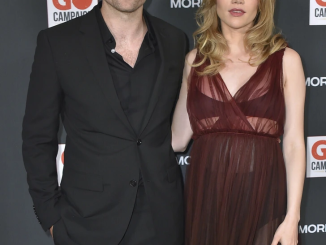
In the heart of Lower Manhattan, an unusual 29-story skyscraper, devoid of windows, stands tall and mysterious. Its code name is Titanpointe, and it is located at 33 Thomas Street. This building has baffled New Yorkers for years.
The building, constructed in 1974, was designed to withstand atomic blasts and was initially intended to house vital telecommunications equipment. It was envisioned as a communication nerve center, fortified against nuclear threats, by the architectural firm John Carl Warnecke & Associates.
This imposing structure, a gray tower of concrete and granite soaring 550 feet into the New York skyline, remains, unlike any other building in its vicinity. Unlike neighboring residential and office buildings, it does not have a single window and remains unilluminated. At night, it takes on an eerie presence, and by day it casts a giant shadow, its square vents emitting a faint hum, often drowned out by the city’s bustling sounds.
For decades, 33 Thomas Street, also nicknamed the “Long Lines Building,” has captured the imagination of New Yorkers as one of the city’s weirdest and most iconic skyscrapers. But the true purpose of this enigmatic structure has remained largely concealed, shrouded in secrecy.
The Secret Behind 33 Thomas Street
Beyond its enigmatic exterior, 33 Thomas Street conceals a deeper secret. This building appears to be more than just a telecommunications hub. Evidence from documents obtained by NSA whistleblower Edward Snowden, along with architectural plans and interviews with former AT&T employees, suggests that 33 Thomas Street served as an NSA surveillance site, code-named Titanpointe.
The NSA’s involvement goes beyond mere speculation. Inside the building, there’s a major international gateway switch that routes phone calls between the U.S. and countries worldwide. The NSA is believed to have tapped into these calls from a secure facility within the AT&T building. This covert surveillance program has targeted not only international organizations like the United Nations, the International Monetary Fund, and the World Bank but also numerous countries, including U.S. allies.
While AT&T has cooperated with the NSA on surveillance, few details have emerged about the specific role of facilities like 33 Thomas Street in carrying out top-secret programs. The Snowden documents, however, provide unprecedented insight into how NSA equipment has been integrated into AT&T’s network in New York City. This integration reveals the methods and technology employed by the agency to gather communications data from the company’s systems.
The NSA’s presence within this iconic skyscraper raises questions about the boundaries of surveillance in the modern world. As Elizabeth Goitein, co-director of the liberty and national security program at the Brennan Center for Justice, points out, “This is yet more proof that our communications service providers have become, whether willingly or unwillingly, an arm of the surveillance state.” The deep integration of the NSA within domestic communications infrastructure challenges the notion that such surveillance can be neatly confined to non-American targets.
You Won’t Believe What This Millionaire Did to Solve Homelessness in His Town!
Homelessness is a problem that many cities face around the world. Even though governments and organizations are trying to fix it, it’s still a big issue. One Canadian millionaire decided to make a difference in his own town with his money. Here’s his story.
In Fredericton, New Brunswick, Marcel LeBrun, a millionaire entrepreneur, took action to help homeless people in his community. Marcel, who made a lot of money from his successful social media monitoring company, decided to invest $4 million of his own money to build 99 tiny homes for those in need. He didn’t just stop at providing homes; he also created job opportunities with his unique approach. This project is called 12 Neighbours.
After selling his company and gaining a lot of wealth, Marcel wanted to use his money for good. Seeing the homelessness issue in Fredericton, he came up with the idea of a tiny home community to give homeless people a new start. He named his project 12 Neighbours and aimed to build a gated community with 99 homes and an enterprise center. This community offers both housing and job opportunities, giving homeless people a chance to rebuild their lives.

Homelessness is a big issue in New Brunswick, with about 1,600 people experiencing it in a single day last year. In bigger cities like San Francisco, Los Angeles, and New York in the United States, the number of homeless people is much higher. Marcel LeBrun saw a chance to make a difference and decided to help those struggling with homelessness.
Marcel’s project, 12 Neighbours, is not just about building tiny homes. He wants to create a supportive community for people. The tiny homes he’s building are more than just places to stay. They are fully-furnished with kitchens, living areas, bedrooms, and full bathrooms. They even have solar panels on the roofs. Marcel sees himself as a community builder, aiming to provide a better life for those in need.

To make his vision a reality, Marcel LeBrun set up a factory where skilled volunteers help build the tiny homes. Using modern techniques, the factory can produce one tiny home every four business days. Once a home is built, it is carefully placed on concrete blocks to form the foundation of the community.
Marcel believes that owning a home is important because it gives people a sense of responsibility and stability. By allowing people who have experienced homelessness to own their own homes, the 12 Neighbours project aims to empower them and create a supportive community.

Besides providing homes, Marcel LeBrun’s project also focuses on creating job opportunities for the residents. The 12 Neighbours community includes an enterprise center with a coffee bar and a silk printing business, both run by the residents. This helps generate income and encourages residents to interact with the wider community.
Like any big project, 12 Neighbours has faced criticism. Some people think it’s better to reintegrate homeless individuals directly into society rather than keeping them together in one place. However, Marcel understands these concerns and has taken steps to ensure the community is safe and supportive.
Marcel explained, “Building a few homes is just as complicated as building many, and we wanted to make a real impact on homelessness in Fredericton. If we want to make a meaningful difference, we need to build houses. If I take someone who’s been living outside and put them in a luxury apartment, they might not succeed because it’s not their community or environment.”

Marcel LeBrun knows how important safety is, so he has included top security features in the 12 Neighbours community. There are gated entrances and advanced surveillance systems to ensure residents feel safe and protected.
LeBrun mentioned that some residents face challenges when they first move in. He explained, “When someone moves into a house, they might have others trying to take advantage of them. They need to learn what it means to manage their own space and decide who they let in and out.”
One of the main goals of 12 Neighbours is to build a strong sense of community both inside and outside its gates. LeBrun wants to create a place where residents and the people of Fredericton can come together. The community has a coffee bar and a personalized printing business to encourage interaction and understanding.
LeBrun told CBC, “I see myself as a community builder. We’re not just building a small community; we’re helping to make our city better.”
Marcel LeBrun’s project to build 99 tiny homes in Fredericton, New Brunswick, is a great example of using personal success to help others. Through 12 Neighbours, he has not only provided homes for those in need but also created job opportunities and a supportive community. His efforts have given hope to many and inspired others to make a difference.



Leave a Reply